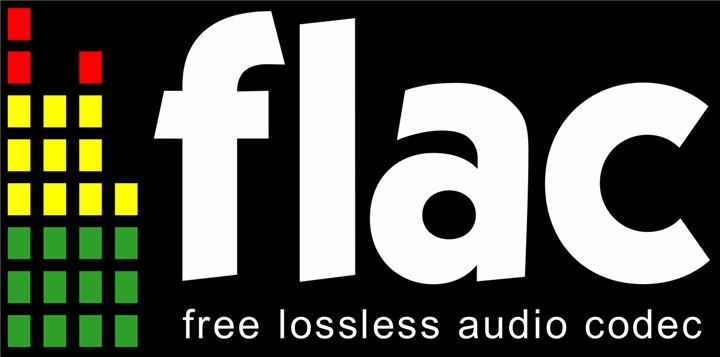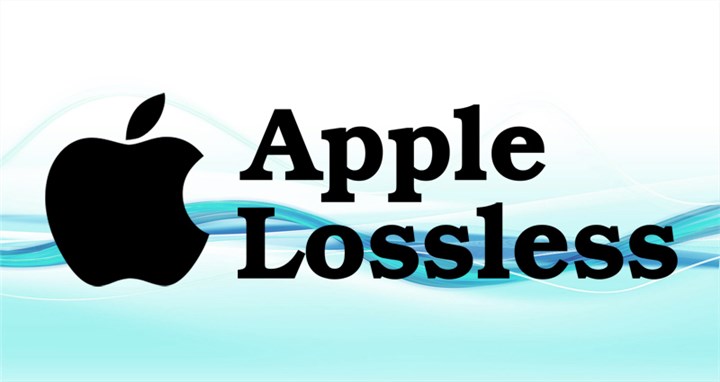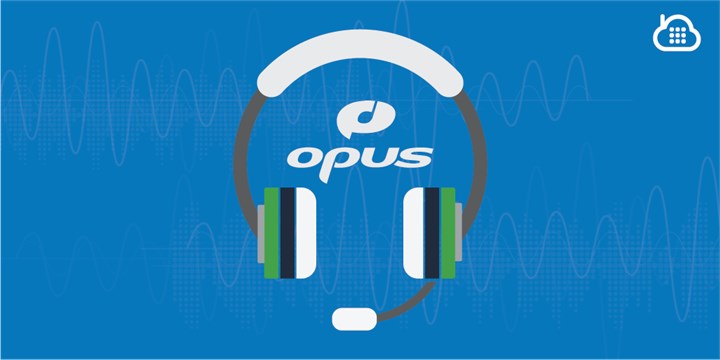An audio codec is a vital software or hardware component that handles the encoding and decoding of audio data. Essentially, it compresses audio files to reduce their size while striving to maintain the best possible quality. This compression is essential for efficient storage and transmission of audio data, making it a fundamental aspect of digital audio technology.
And choosing the right audio codec can make a difference in many ways.
First, different codecs offer varying levels of audio quality, and this can significantly impact the overall listening experience. For instance, a high-quality codec can preserve the nuances of a music track or a podcast, ensuring that the listener enjoys a rich and immersive audio experience. On the other hand, a lower-quality codec might compromise the fidelity of the audio, resulting in a less satisfying listening experience.
Then the choice of codec can also affect the compression ratio, which determines how much the audio file size is reduced. Some codecs are more efficient at compressing audio data while maintaining high quality, resulting in smaller file sizes without sacrificing much in terms of sound fidelity. Others may prioritize extreme compression, leading to significantly smaller file sizes but at the cost of audio quality.
Another crucial factor to consider is playback compatibility. Not all devices and software support every audio codec. Choosing the right codec ensures that your audio files can be played back on a wide range of devices and platforms without compatibility issues.
When selecting the best audio codec for your needs, it's essential to consider the specific requirements of your audio files. Are you prioritizing the highest possible audio quality, or are you more concerned about minimizing file size? Do you need your audio files to be compatible with a wide range of devices and software?
By understanding your priorities, you can make an informed decision about which audio codec will best suit your needs. Whether you're working with music, podcasts, or any other form of audio content, the right codec can make a significant difference in the overall experience for both creators and consumers.
Anyway here are some popular audio codec options, with their corresponding features:
Popular Audio Codecs and Their Characteristics
FLAC (Free Lossless Audio Codec)
FLAC is all about maintaining the original audio quality. Unlike lossy compression methods, which sacrifice some audio data to reduce file size, FLAC preserves every bit of the original audio. This means you get to enjoy the same high-quality sound without compromise.

One of the key advantages of FLAC is its support for up to 24-bit/192kHz audio. This means it can handle high-resolution audio files with ease, delivering an immersive listening experience that stays true to the original recording.
While FLAC offers lossless compression, it still manages to reduce file sizes by around 50-60% of the original. This means you can save storage space without sacrificing audio quality, making it a practical choice for audiophiles and music enthusiasts.
ALAC (Apple Lossless Audio Codec)
ALAC is also a lossless audio compression format developed by Apple. But what does "lossless" really mean? It means that when you compress audio using ALAC, you're not sacrificing any audio quality. It's like zipping a file on your computer – you're making it smaller, but when you unzip it, everything is exactly the same as it was before.

One of the most impressive features of ALAC is its ability to maintain the same audio quality as the original source. This means that whether you're listening to your favorite song or editing audio for a project, you can trust that the integrity of the sound remains intact.
ALAC supports audio up to 24-bit/192kHz, which is pretty impressive. This high level of support ensures that even the most intricate details of your audio are preserved, delivering a rich and immersive listening experience.
Compared to FLAC, ALAC offers slightly better compression ratios. This means that ALAC can potentially create smaller file sizes without compromising audio quality, giving it an edge in terms of storage efficiency.
AAC (Advanced Audio Coding)
When it comes to audio compression, AAC is a standout choice. It utilizes lossy compression, which means that some audio data is discarded during the encoding process. This results in smaller file sizes, making it ideal for streaming and broadcasting. But don't worry, despite the compression, AAC still manages to deliver impressive audio quality.
AAC has become a go-to option for streaming and broadcasting due to its efficient compression and ability to maintain good audio quality at lower bitrates. This makes it perfect for platforms like Spotify and YouTube, where audio needs to be streamed smoothly without sacrificing quality.
AAC also supports audio with a resolution of up to 24-bit/96kHz. This means that it can handle high-resolution audio files, ensuring that the nuances and details in your music are preserved, even at higher sample rates.
One of the key strengths of AAC is its ability to offer good audio quality at lower bitrates, typically ranging from 128 to 320 kbps. This makes it an efficient choice for delivering high-quality audio while keeping file sizes manageable. Whether you're listening to music on the go or streaming your favorite podcast, AAC ensures a satisfying audio experience.
In conclusion, AAC stands out as a versatile and efficient audio codec, offering impressive audio quality at lower bitrates and supporting high-resolution audio. Whether you're a music enthusiast, a content creator, or a streaming platform, AAC has proven to be a reliable choice for delivering top-notch audio experiences.
MP3 (MPEG Audio Layer III)
MP3, which stands for MPEG Audio Layer III, uses a "lossy" compression method. This means that some audio data is permanently removed during the compression process to reduce the file size. But don't let the term "lossy" scare you off! The compression is designed to remove the audio data that is less perceptible to the human ear, allowing for significant file size reduction without a drastic impact on audio quality.

One of the reasons MP3 has stood the test of time is its widespread compatibility. It's supported by a vast array of devices, software, and platforms, making it incredibly versatile. Whether you're using a vintage MP3 player or the latest streaming service, chances are, it supports MP3 playback. This level of compatibility has solidified MP3's position as one of the most widely used audio formats in the world.
MP3 supports audio with a resolution of up to 16-bit/48kHz, which is more than enough for most listening scenarios. When it comes to audio quality, MP3 shines, especially at higher bitrates. Bitrates around 192-320 kbps deliver impressive audio quality, making it difficult for the average listener to discern any loss in quality compared to uncompressed audio.
Opus
Opus is an open-source lossy audio codec designed for real-time communication and streaming. It's like the secret sauce behind high-quality audio transmission over the internet. With support for up to 24-bit/48kHz audio, Opus delivers exceptional sound quality, even at low bitrates of around 64-128 kbps.
Opus works its magic by efficiently compressing audio data without sacrificing quality. This means you can enjoy crystal-clear audio while conserving bandwidth. Whether you're video conferencing, live streaming, or listening to music online, Opus ensures that the audio experience remains top-notch.

Opus isn't just another audio codec. It has earned its stripes through real-world performance. Studies have shown that Opus outperforms other codecs in various scenarios. For instance, in a listening test conducted by the Hydrogenaudio forum, Opus at 64 kbps was preferred over other codecs, including AAC and MP3, demonstrating its superior audio quality at low bitrates.
This audio codec is a game-changer for real-time communication applications like VoIP, online gaming, and video conferencing. Its low latency and high audio quality make conversations and interactions feel natural and lifelike. Additionally, Opus excels in streaming scenarios, where maintaining audio fidelity while conserving bandwidth is crucial.
As the demand for high-quality audio in real-time communication and streaming continues to rise, Opus is well-positioned to meet these needs. Its ability to deliver exceptional audio quality at low bitrates makes it a compelling choice for developers, content creators, and anyone seeking an immersive audio experience over the internet.
Vorbis
Vorbis is also an open-source lossy audio codec that's designed specifically for streaming and archiving purposes. But what does that mean for you? Well, it means that Vorbis is all about delivering high-quality audio while keeping file sizes manageable. This makes it perfect for streaming your favorite tunes or preserving your audio archives without sacrificing audio fidelity.

Now, let's get into the nitty-gritty details. Vorbis supports audio up to 24-bit/192kHz, which is pretty impressive, right? This means you can enjoy top-notch audio quality with Vorbis, even at lower bitrates ranging from 96 to 192 kbps. So, whether you're a stickler for high-fidelity audio or you're looking to conserve storage space, Vorbis has got you covered.
You might be wondering, "How does Vorbis manage to deliver such good audio quality at lower bitrates?" Well, it's all thanks to its advanced encoding techniques. Vorbis uses perceptual audio coding to prioritize the most important audio information, ensuring that you get a great listening experience without bloating file sizes. This makes it an ideal choice for streaming platforms and audio archives where efficiency is key.
So, with all the audio codecs out there, why should you consider Vorbis? The answer lies in its balance of quality and efficiency. Vorbis strikes a sweet spot, offering impressive audio fidelity at lower bitrates, making it a versatile choice for various audio applications. Plus, being open-source means that it's continuously evolving with input from the community, ensuring that it stays relevant and competitive in the audio codec landscape.
Best Audio Codec Recommendations
Based on the details provided above for the popular audio codecs, here are our recommendations for different purposes. So choose one which suits your needs.
1. For Archiving and Preserving Original Audio Quality: FLAC (Free Lossless Audio Codec)
When it comes to archiving and preserving original audio quality, FLAC is the go-to choice. It offers lossless compression, meaning it maintains the original audio quality without sacrificing any data. This makes it perfect for storing your high-fidelity audio files without compromise.
What's more, FLAC is widely supported across platforms and software, so you won't run into compatibility issues. With moderate compression ratios of around 50-60% of the original file size, you can save space without sacrificing quality.
2. For Streaming and Online Distribution: Opus
If you're looking to stream or distribute audio online, Opus is the codec for you. Designed for real-time communication and streaming, Opus is a lossy codec that offers excellent audio quality at low bitrates, typically ranging from 64-128 kbps. This makes it perfect for maintaining high-quality audio while conserving bandwidth.
What's even better is that Opus is open-source and royalty-free, making it a cost-effective and accessible choice for online audio distribution.
3. For General Music Playback and Portability: AAC (Advanced Audio Coding)
When it comes to general music playback and portability, AAC is a top contender. As a lossy codec widely used for streaming and broadcasting, AAC offers good audio quality at lower bitrates, typically ranging from 128-320 kbps. This means you can enjoy high-quality audio while keeping file sizes manageable.
Moreover, AAC is widely supported on modern devices and platforms, so you can count on it to play smoothly across your favorite devices.
4. For Legacy Compatibility and Widespread Support: MP3 (MPEG Audio Layer III)
Last but not least, we have the classic MP3. While it's been around for a while, MP3 remains a solid choice for legacy compatibility and widespread support. As a lossy codec with widespread compatibility across devices and software, MP3 offers good audio quality at higher bitrates, typically ranging from 192-320 kbps.
Whether you're looking to play music on older devices or distribute your audio to a wide audience, MP3 is a reliable option that gets the job done.
Future Trends and Developments of Audio Codecs
As technology continues to evolve, so do the audio codecs that power our digital audio experiences. Let's take a closer look at the exciting advancements and developments shaping the future of audio codecs.
One of the most significant trends in audio codecs is the continuous improvement in audio compression algorithms. These advancements are driving improved audio quality at lower bitrates, making it possible to stream high-fidelity audio even in bandwidth-constrained environments. For instance, the latest codecs are achieving increased compression ratios for lossless audio, allowing for more efficient storage and transmission of high-resolution audio files without compromising quality.
Then, with the rise of spatial audio, immersive audio, and virtual reality applications, the demand for audio codecs that can deliver a truly immersive audio experience is on the rise. New codecs are being developed to support these emerging technologies, enabling audio content creators to provide a more captivating and realistic audio experience for their audiences.
Lastly, artificial intelligence and machine learning are playing a pivotal role in the optimization of audio codecs. These technologies are being leveraged to enable adaptive bitrate streaming, where the codec dynamically adjusts the bitrate based on network conditions to ensure a seamless listening experience. Additionally, AI and machine learning are being used for dynamic codec selection, allowing audio streaming services to choose the most suitable codec for each user's device and network environment.
These advancements are not just theoretical concepts; they are already making a tangible impact on the audio industry. For example, a recent study by the Audio Engineering Society found that the latest audio codecs have achieved a 30% improvement in compression efficiency compared to previous generations. This means that users can enjoy higher quality audio streaming while consuming less data, making it a win-win for both consumers and service providers.
Conclusion
In conclusion, the world of audio codecs is diverse and impactful, offering a range of options to suit different needs. By understanding the role of audio codecs and the factors to consider when choosing one, you can ensure that your audio files are optimized for quality, size, and compatibility. So, the next time you're working with audio, take a moment to consider the codec – it might just make all the difference in the world of digital audio.








